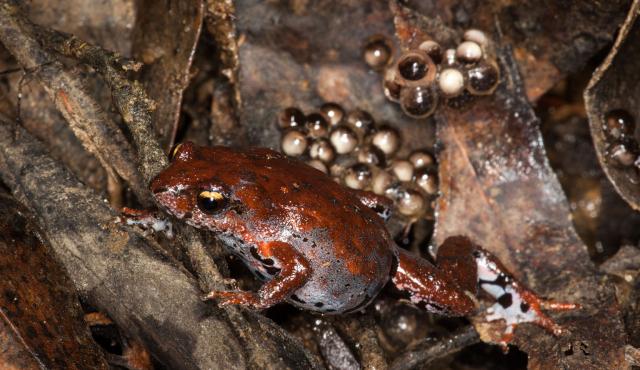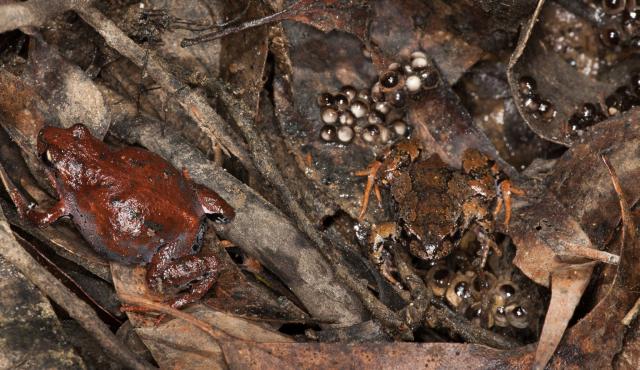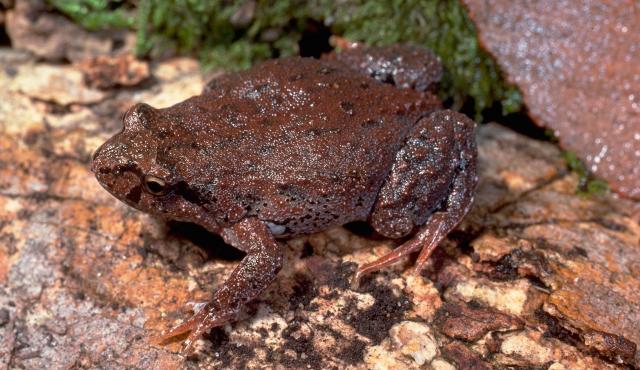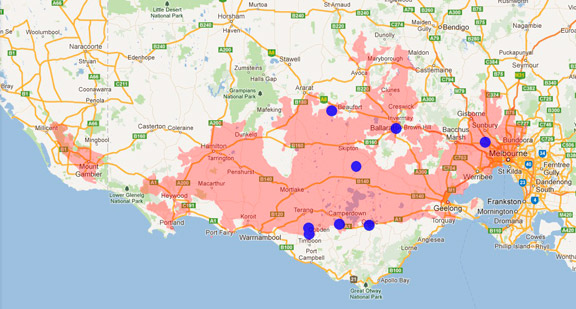A range of teacher professional learning programs will be developed to accompany the Biodiversity of the Western Volcanic Plains online outreach...



Eastern Smooth Frog
Geocrinia victoriana
Breeding season: summer and autumn. Females lay 90-160 pigmented eggs spawned in sticky clumps in leaf litter or grass tussocks which will later be flooded.
| Details | Description |
| Type | Amphibian |
| Group | Frog - Southern Frog |
| Other Common Names | Victorian Smooth Froglet |
| Identifying Characteristics | |
| Distinctive Markings | Adults have a distinctive black patch behind the eye, a smooth ventral surface, pink patches in the armpits and groin, and a pink and black mottled pattern on the hind thighs. Slightly pointed snout and indistinct tympanum. |
| Diet | Carnivore. Adults feed on invertebrates. |
| Habitat | Moist areas in a range of habitats including grasslands. |
| Native Status | Native to Australia |
| Sounds | The identifying call is an initial "cr-r-ack" followed by a long series of short, rapidly repeated notes "wa-a-a-a-a-ark pip-pip-pip-pip-pip-pip". |
| Taxonomy | |
| Phylum | Chordata |
| Class | Amphibia |
| Order | Anura |
| Family | Myobatrachidae |
| Genus | Geocrinia |
| Species | victoriana |

Distribution maps indicate current and historic locations where species have been sighted.
Source: Atlas of Living Australia
| Conservation Status | |
| DEPI Advisory List | Not listed |
| FFG Act | Not listed |
| EPBC Act | Not listed |
The conservation status of species is listed within Victoria and Australia.
The Department of Environment and Primary Industry (DEPI) Advisory List consists of non-statutory advisory lists of rare or threatened flora and fauna within Victoria.
The Flora and Fauna Guarantee Act 1988 (FFG Act) lists threatened species in Victoria. Under the Act, an Action Statement is produced for each listed species.
The Environment Protection and Biodiversity Conservation Act 1999 (EPBC Act) is the Australian Government’s key piece of environmental legislation, listing nationally threatened native species and ecological communities.



